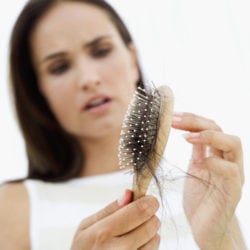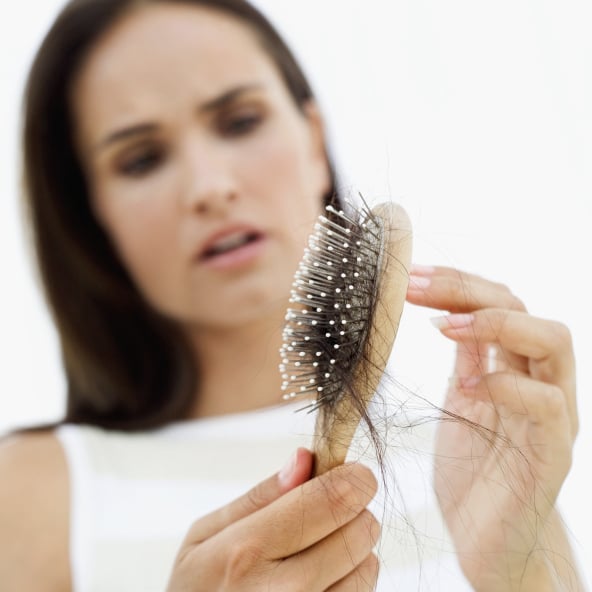
Alopecia, the clinical term for balding, is a real problem for many women.
Female pattern baldness typically begins with thinning hair, not hairline recession, and rarely leads to total hair loss. However, with one-third of women experiencing some degree of hair loss in their lifetime, it can be distressing. But what separates a few hairs on your pillow from beginning baldness?
What Alopecia Looks Like for Women
Your hair follicles typically grow a half-inch every month for about 2 to 6 years before falling out and getting replaced by new hair. On average, you’re expected to lose 50 to 125 hair follicles per day that will be replaced by new hair growth. Any loss exceeding that amount is considered to be true hair loss and typically manifests itself first in hair thinning around the crown of the scalp. The front hairline usually remains clearly distinguished in women.
Causes of Alopecia in Women
Unfortunately, female pattern baldness can be caused by a wide variety of factors that may not always be able to be diagnosed. A few potential culprits include:
- Physical stress, such as a recent surgery or weight change.
- Emotional stress, due to a tragedy or mental illness.
- Certain medications containing high doses of Vitamin A or ones with hormones, such as birth control.
There are a few things that could potentially contribute to hair loss, including genetics, age, and diet. Based on studies, there are a few things we know that do not cause female pattern baldness.
Despite what you may have heard, these things won’t make you bald:
- Frequent shampooing or brushing
- Hats or wigs
- Dandruff
Treatments for Alopecia in Women
Once you’re diagnosed with female pattern baldness, treatment needs to begin immediately. If left neglected, hair loss can become permanent. There are a few options, depending on what you and your doctor decide is best for your needs:
- Medication is an option, although there is only one form of medication approved by the FDA to treat baldness.
- Hair transplants are another option. A licensed professional (like us) will remove tiny plugs of hair from areas on your scalp where the hair is thicker and place them in the balding area to encourage regrowth.
If you’re uncertain about your hair loss or where to begin treatment, give us a call! We’re happy to help you explore your options and get back to feeling yourself!

